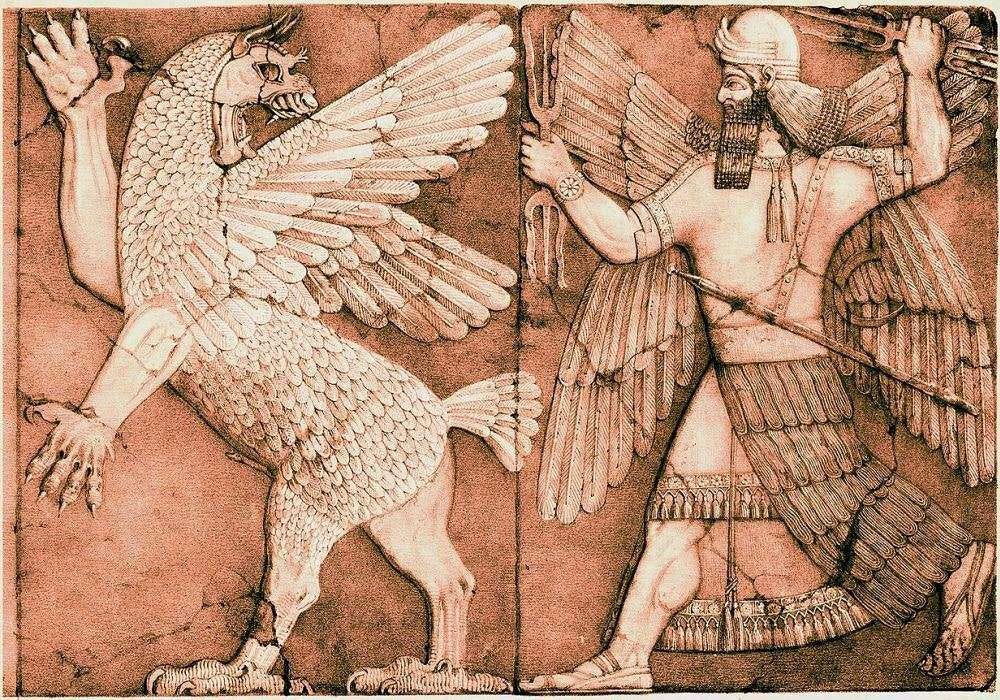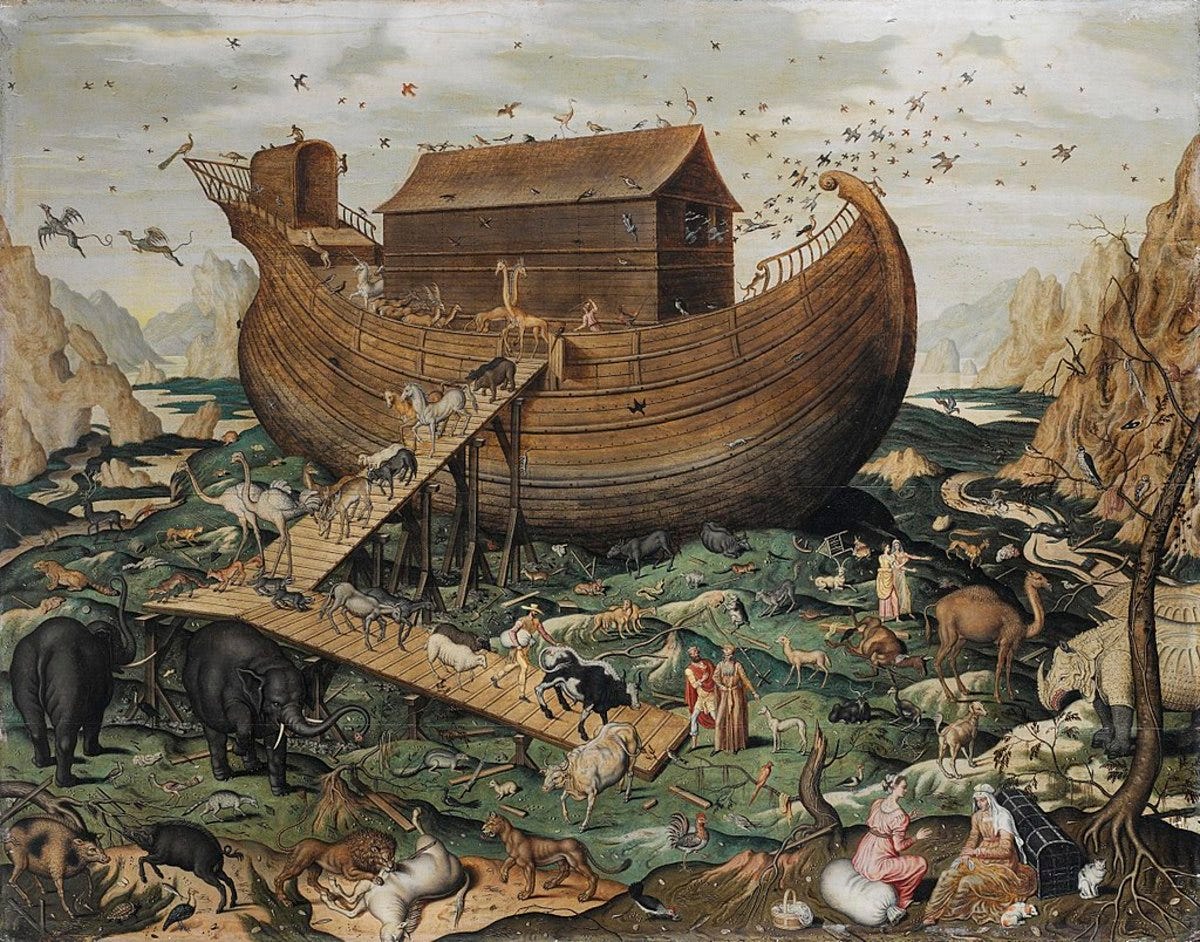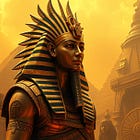We previously explored Egyptian cosmogony. Now, we move to Mesopotamia. This is part of an ongoing series where we explore how different cultures across time have imagined the dawn of the world.
One of the oldest and most fascinating views of creation came from Mesopotamia - the region between the Tigris and Euphrates Rivers, where some of the first cities in human history appeared.
It sat at a crossroads of civilizations - bordered by the Zagros Mountains to the east and the Syrian Desert to the west. It was open to influence from Elam, Anatolia, and later Persia and the Levant. As trade routes and empires expanded, so did the spread and blending of myths.
Mesopotamia, meaning “the land between rivers,” refers to now modern-day Iraq and parts of Syria, Turkey, and Iran.
Mesopotamians didn’t have just one story about how the world began. But they all give us a glimpse into how the people of ancient Mesopotamia saw their world, their gods, and their role in the grand scheme of things. Their view on how the world was created is more pragmatic and utilitarian than spiritual or ethical in nature.
The Many Shades of Mesopotamian Cosmogony
Mesopotamia, often hailed as the "Cradle of Civilization," was a melting pot of various cultures, each with its own beliefs, practices, and interpretations of the cosmos. The region, home to city-states such as Sumer, Akkad, Assyria, and Babylon, was a land of diverse and ever-evolving religious traditions.
The Enuma Elish: Creation Through Combat
One of the most well-known Mesopotamian creation myths is the Enuma Elish, written in Babylon during the second millennium BCE. It tells the dramatic story of how the universe was formed from a battle between gods.
In the beginning, there were two primeval beings: Apsu (freshwater) and Tiamat (saltwater). From them came other gods - young, noisy, and disruptive. Apsu wanted to silence them, but before he could act, he was killed by his descendant, Ea (also known as Enki), the god of wisdom.
Tiamat was furious over Apsu’s death. She gathered an army of monsters and set out to destroy the younger gods. The gods, frightened and uncertain, were in dire need of a champion to face the wrath of Tiamat. In response, Marduk, a powerful warrior god, agreed to fight her on one condition: that the other gods crown him king if he wins.
Marduk defeated Tiamat in an epic battle. He split her body in half, creating the sky from one part and the earth from the other. He then organized the cosmos, assigning jobs to the gods and setting celestial bodies in motion.
Human Origins and the Flood in Mesopotamian Myths
Two of the most important Mesopotamian myths - Atra-Hasis (Akkadian) and the Eridu Genesis (Sumerian) offer deep insight into how ancient Mesopotamians understood the purpose of humanity and the relationship between humans and the gods. Both myths follow a similar structure: the gods create humans to ease their burdens, civilization grows, the gods grow displeased, and a catastrophic flood follows.
Why Humans Were Created
In both stories, the gods originally handled all labor themselves, digging irrigation canals, farming, and maintaining the natural world. But the gods eventually grew weary of this constant toil and rebelled. The solution? Create a new being - humanity, to do the work for them.
In the Akkadian Atra-Hasis, the gods call on the mother goddess Mami to fashion humans. She takes clay and mixes it with the blood and flesh of a slain god, giving humans both earthly substance and a spark of the divine. However, this divine spark comes with a cost: humans are born to serve the gods, not to rule.
Let her create a mortal man
So that he may bear the yoke...
So that he may bear the yoke, the work of Ellil
Let man bear the load of the gods!
- Epic of AtrahasisThe Sumerian Eridu Genesis tells a similar story, though it emphasizes the building of cities like Eridu, the first city established by divine plan. Here too, humans are created to care for the earth and serve the gods through labor and temple offerings.
The Great Flood: A Divine Reset
As time passes, the human population increases. According to both myths, humans become noisy, chaotic, or perhaps disobedient (details vary), but the message is the same: the gods become frustrated and resolve to wipe out humanity with a massive flood.
In the Atra-Hasis, the god Enlil is especially annoyed by human clamor. He sends plagues and famine first, and finally decides to send a flood. But Enki (also called Ea), the god of wisdom and protector of humanity, secretly warns Atra-Hasis, telling him to build a boat to survive.
The Eridu Genesis mirrors this narrative closely. The human hero is named Ziusudra, and again it is Enki who steps in to preserve life. Ziusudra is told to construct a massive boat, which allows him to survive the deluge. After the flood, he offers sacrifices to the gods and is rewarded with eternal life in Dilmun, a paradise-like realm.
Recurring Themes in Mesopotamian Creation Myths
Although the myths differ in characters and settings, they share a number of consistent themes that reflect how the Mesopotamians understood their world.
1. Creation From Chaos
The world didn’t begin in peace. It began in disorder or chaos (similar to Egyptian Cosmogony beliefs). Divine beings had to bring structure to a wild, formless universe. Tiamat’s body literally becomes the ordered cosmos.
2. The Gods Need Help
In these stories, gods aren’t all-powerful and self-sufficient. They get tired, make mistakes, and often rely on others, especially humans to keep things running.
3. Humans as Servants
People weren’t made for glory or self-fulfillment. They were made to perform tasks the gods no longer wanted to do. This idea shows up in every major creation myth in the region.
4. Floods as a Reset Button
Floods appear again and again, often as a response to human noise, disobedience, or overpopulation. The gods use floods to restart or reshape humanity.
Key Gods in the Creation Stories
Several deities play important roles across these myths:
Marduk: Babylon’s chief god, who defeated Tiamat and created the world from her body.
Enki/Ea: The wise god of water, magic, and creation. He often acts as a helper to humans.
Enlil: God of wind and air, sometimes seen as the one who separates heaven and earth.
Mami (Nintu): The mother goddess who molded the first humans from clay and divine blood.
Namma: A Sumerian creator goddess who may have been one of the earliest deities linked to human creation.
Each god had a specific role, and creation was seen as a collaborative, divine process, not the act of a single all-powerful being.
No One True Beginning
Mesopotamian myths were flexible. Cities could adapt or rewrite stories to emphasize their own gods. For example, Babylon elevated Marduk, while Sumerian myths focused more on Enki or Enlil.
The goal of this fluid storytelling was to help cities promote their local deities and political power. But it also meant that there is no single Mesopotamian “book of Genesis.” Instead, we have a collection of myths, each offering a different piece of the cosmic puzzle.
Until next time!❤️











Deeply interesting! Thankyou!
I lived and worked for many years in Australian First Nation/Indigenous communities - living cultures which have grown in this landscape for upwards of 60,000 years. They, too, have flood stories in their oral creation myths. Not surprising, given the length of time they have been here and the sea level rise they have seen in that time - also the mammoth flood events parts of inland Australia are prone to from time to time.
Best Wishes - Dave :)